Photographers in general and landscape photographers specifically take most of their images in the early morning or late afternoon light. These times, for an hour or two after sunrise and the same before sunset are often referred to as the “Golden Hours”. When the sun is close to the horizon, the incident light travels farther through the atmosphere and more of it is refracted or scattered, losing some of the higher wavelengths (blues) leaving the lower wavelengths (reds) creating the typical pinkish sunrises and red/orange sunsets we enjoy so much. Also during the golden hours, the shadows are longer, the light is more even and the lighting ratios are reduced all of which combine for the great light which makes every image better than when shot in the harsher direct light of the mid-day.
The images in this post are taken in Sedona Arizona, which is located about two hours north of Phoenix Arizona and it’s where Deb & spent the first night of our five-day photo tour of the Grand Canyon area. Sedona is an absolutely beautiful town and the scenery is spectacular in all directions.
The five images are shown in chronological order, the first two being snap shots taken at the side of the road (Route 179) as we entered Sedona.
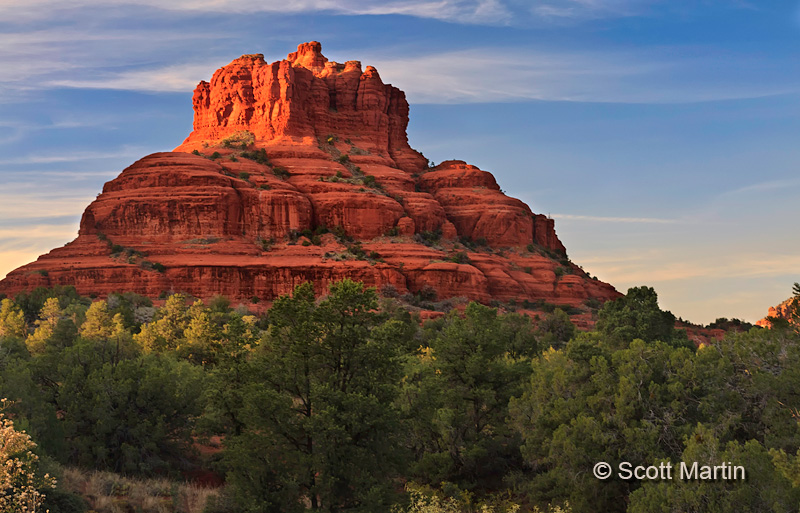
.
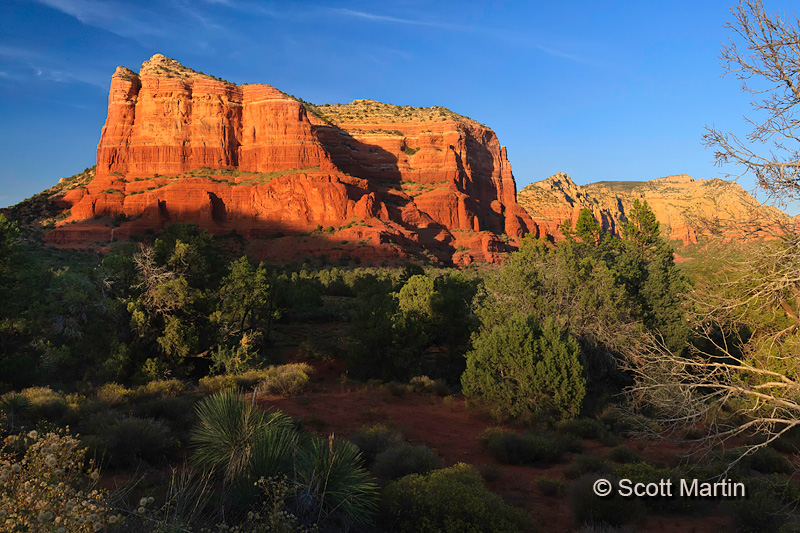
The next three sunset shots mark the transition from the golden hour to twilight. Twilight being the time between sunset and dusk when although the sun is below the horizon the sky retains its blue colour to the eye before transitioning to the blackness of night. “Night” photography should always be done during twilight while the sky retains some colour which serves to preserve the distinction between the objects and the sky. Once the sky is dark the boundary between the object and the background is lost resulting in a poor image.
The following images were taken from the top of Airport Road which climbs to a vantage point high above Sedona and is a popular place for people to gather and watch the spectacular sunsets. There were probably a hundred people there the evening we were including a number of serious photographers jostling for the best spot to set up a tripod. They were taken with a 16-35/2.8 zoom lens using Lee & Singh-Ray 4×6 ND gradient filters.
This next image is a favourite, taken just before sunset, and I wish you could see it full size. Our first night in Arizona was the only day we saw clouds in the sky.
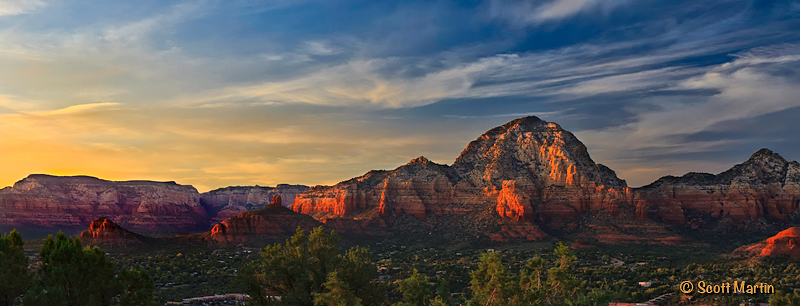
The next image was taken after sunset and by using a longer exposure captured more colour (reds/pinks) than would be seen while watching the sunset.
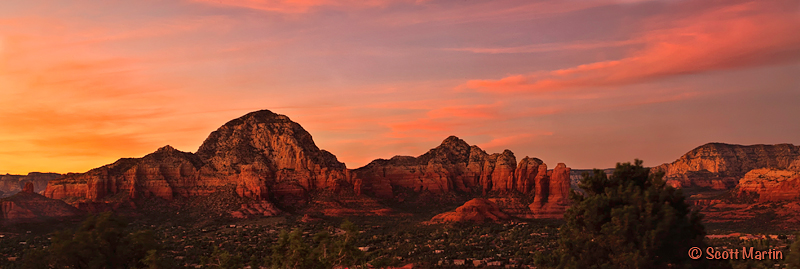
This last image was taken long after sunset when it was almost dark as you can tell by the lights in the Sedona Streets in the foreground. As in the previous image, an overly long exposure was used to get some light in the sky, which would have appeared almost dark when taking the photograph.
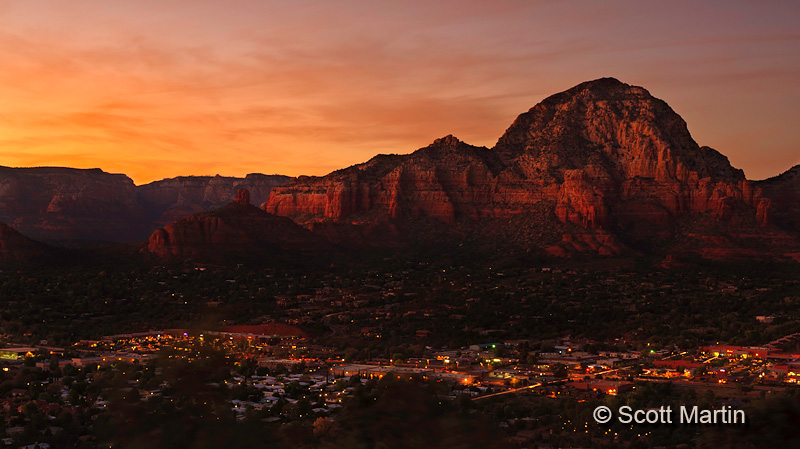


Wonderful images as always Scott! We hope to retrace your path one day and hope to capture images as you have. You obviously did your homework planning your trip. I also found it very helpful looking at the exif data which remained intact in your photos thanks!
Thanks Arni and its a trip well worth taking. I’m glad you enjoy the EXIF data and as I check other photographers EXIF information I try to leave mine intact.
Fabulous Scott. Need to come over and spend some time learning from you
Thanks Rob….and about getting together, perhaps we should meet up half way, in Hawaii 🙂
Now that’s an Idea! Always wanted to go to Hawaii